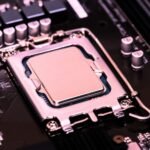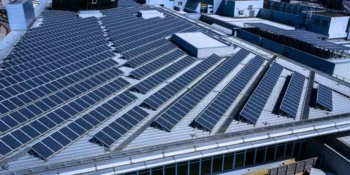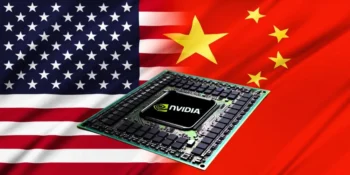Embedded technology has significantly shaped the modern world by seamlessly integrating computing power into various devices and systems. Embedded systems are at the heart of everyday gadgets, ranging from smartphones, household appliances, and automobiles to industrial machinery and medical equipment. This article delves into the evolution of embedded technology, exploring its humble beginnings and the cutting-edge advancements that have revolutionized industries and enhanced our lives.
The Emergence of Embedded Technology
The roots of embedded technology can be traced back to the mid-20th century when the first electronic computing devices were introduced. Early examples of embedded systems were electromechanical machines that performed specific tasks, such as the first programmable computer, the ENIAC, built in 1945 to calculate artillery firing tables. These early machines laid the groundwork for developing more sophisticated embedded systems.
Transistors replaced vacuum tubes as technology progressed, creating smaller and more reliable components. In the 1960s and 1970s, embedded systems evolved from large, expensive mainframe computers to miniaturized devices with dedicated functions. These early systems were prevalent in industrial control systems and consumer electronics like microwave ovens and calculators.
Microprocessors Revolutionize Embedded Systems
The breakthrough in the embedded technology field came with the invention of the microprocessor. In 1971, Intel introduced the first microprocessor, the Intel 4004, which integrated all the components of a central processing unit onto a single chip. This innovation marked a turning point in the evolution of embedded systems, enabling the creation of smaller, more powerful, cost-effective devices.
Introducing microprocessors led to rapid growth in embedded systems across various industries. The development of microcontrollers, which combined a microprocessor with memory and input/output peripherals on a single chip, further fueled this growth. Microcontrollers allowed for even more specialized applications and made it easier to embed intelligence into devices.
Growth and Diversification
Microprocessors evolved rapidly throughout the 1970s and 1980s, becoming increasingly powerful and energy-efficient. As a result, embedded systems began to proliferate across various industries, finding applications in telecommunications, automotive, consumer electronics, and more. The diversity of applications led to a specialization in the systems, with manufacturers developing chips optimized for specific tasks, such as signal processing or graphics rendering.
Additionally, the development of real-time operating systems (RTOS) during this period further improved the capabilities of embedded systems. RTOS allowed developers to manage tasks with strict timing requirements, making them suitable for critical applications like aerospace, medical devices, and industrial automation. RTOS offered developers better control over system resources, ensuring predictable and reliable performance.
Internet of Things (IoT) Revolution
The turn of the 21st century witnessed the advent of the Internet of Things (IoT), propelling embedded technology into a new era of interconnectedness. IoT leveraged embedded systems to create smart devices that could communicate and share data over the internet. Integrating embedded technology with cloud computing and data analytics opened up endless possibilities, enabling smart homes, wearable devices, and autonomous vehicles.
With IoT, the systems have become more than standalone devices; they have become nodes in vast interconnected networks. These devices collect and share data, enabling businesses and individuals to make informed decisions based on real-time information. IoT has also revolutionized industrial processes through concepts like Industry 4.0, where factories use embedded sensors and intelligent systems to achieve higher efficiency and predictive maintenance.
Machine Learning and Artificial Intelligence (AI)
In recent years, embedded technology has embraced machine learning and artificial intelligence, pushing the boundaries of what embedded systems can achieve. By embedding AI algorithms directly into devices, they can process and analyze data locally, reducing latency and enhancing privacy. It has resulted in smarter and more autonomous systems, such as AI-powered cameras, voice assistants, and intelligent robotics.
Embedded AI has also contributed to advancements in healthcare, where devices can diagnose diseases, monitor patient conditions, and even assist in surgical procedures. In the automotive industry, AI-equipped embedded systems are at the forefront of self-driving car technology, making autonomous vehicles a reality.
Edge Computing
With the exponential growth of data generated by IoT devices, edge computing emerged as a solution to reduce latency and bandwidth consumption. Embedded systems at the edge of networks process data locally, only sending critical information to the cloud. Edge computing has proven invaluable in applications like self-driving cars, where real-time decision-making is crucial.
Edge computing also addresses privacy and security concerns by processing sensitive data locally instead of sending it to centralized servers. This approach minimizes the risk of data breaches and ensures the continuity of operations even when internet connectivity is disrupted.
Conclusion
Embedded technology has come a long way since its inception, evolving from simple electromechanical machines to sophisticated microprocessor-based systems. The development of real-time operating systems, the rise of IoT, and the integration of AI have propelled embedded technology into new frontiers, transforming industries and our daily lives. As society becomes increasingly dependent on interconnected devices, ensuring the security and resilience of embedded systems is crucial to fully reap the benefits of this ever-evolving technology. The future holds immense potential for embedded technology to drive innovation, enhance efficiency, and make our lives safer and more comfortable.










